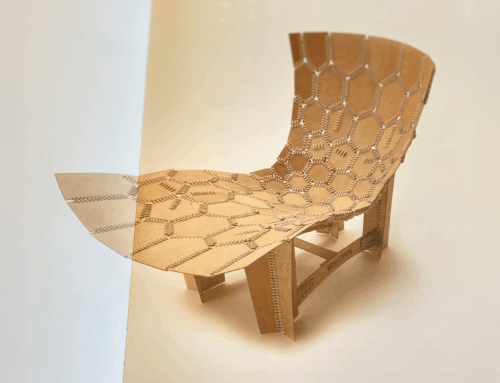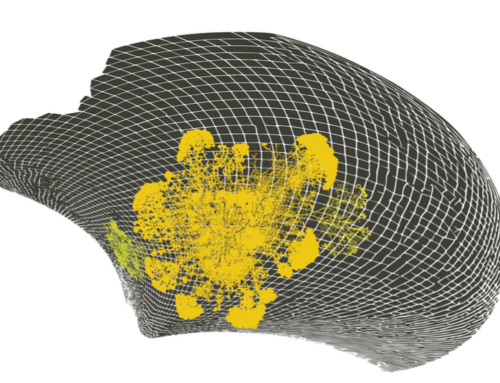Summary of a lecture to an international meeting of Facility Managers in 1999.
How are we to design modern space? saturated with information and systems; complex but incomprehensible; an exhilarating human achievement, and a terrifying prospect, at the same time.
Management of work environments, in particular, is moving centre-stage in discussions about innovation, learning, and the knowledge economy.
We are beginning to understand that innovation is a social process that involves complex interactions between individuals, communities of practice, and customers.
Fostering these complex interactions – designing the context of innovation and learning – brings ‘soft’ aspects of workplace design to the fore.
These soft aspects concern the constantly changing flows of people and ideas that characterise a dynamic learning organisation.
Facility management, in such a context, becomes the ‘placeholder’ of the activities, interactions, and encounters that lead to innovation and knowledge.
Looking a year or two ahead, and following our visit to Rover and the discussion afterwards, I decided to speculate about new roles for FM.
NEW ROLE 1 – “SPEED MERCHANT”
“Speed is God, Time is the Devil”, goes Hitachi’s company slogan. But it’s hard to accelerate when you’re big. For many big companies, too much dispersal of places and people may be counter-productive. “Mobility is starting to backfire”, says Lufthansa. Large organisations can emulate the dynamism and speedy decision-making typical of smaller firms by using IT and space in new ways. The designer’s new role is to manage the relationship between place, time and distance. Which is why Rover decided to put all those people in one facility.
NEW ROLE 2 – “ALBATROSS KEEPER”
Expect to hear more alarming comments like this one: “The physical assets owned by most corporate giants represent an albatross hanging around their necks. Ownership of any kind of asset other than information is becoming a liability. You gain flexibility by not owning physical assets, by concentrating on ownership of intellectual property and moving that around”. These words were written (partly as a provocation) by Bill Mayon-White, a professor at the London School of Economics. But even albatrosses have their uses. If it is indeed the quality of interactions with other people and communities and customers that determines the success of an innovative, knowledge-nurturing organisation, then heavy material assets like buildings are ok so long as they contribute to that.
NEW ROLE 3 – “IMAGINEER”
Psychologists describe as “catatonic space” an environment that is so devoid of the contextual clues(daylight, heat, wind etc) that we fail to make sense of where we are. The Walt Disney Company employs “imagineers” to ensure that its supremely artificial environments do not become catatonic. I learned at the post-Rover discussion that we are beginning to see something similar emerge in FM – ‘office clowns’, ‘animateurs’, ‘showbusiness impresarios’ and other jobs whose role is to generally ‘liven the place up’.
NEW ROLE 4 – “DWELL-TIME MANAGER”
I did an interview with John Worthington maybe 10 years ago in which he alerted me to Marshall MacLuhan’s observation that airports are ‘universities of the future’. Since then I’ve become a minor expert on the phenomenology of airports, and see many connections with workplace issues.. ‘Dwell-time’ is the time spent by passengers milling around waiting for flight connections : it is also the time when they spend money – which is why airport managers (who are not the same as flight operations people) love it. My conceit is this: in knowledge-based organisations, managing space and time for reflection becomes a necessity rather than a luxury. ‘Dwell time’ will be time to think, time to reflect, time to process all the information poured over us in high tele-density workplaces.
NEW ROLE 5 – “KNOWLEDGE ENGINEER”
Knowledge management is the new imperative – driven by the shift away from a world of goods and services towards one of information and relationships. The keyword here is minds in the in the plural – and in particular the capability of a group. Traditional workplace design emphasised the individual worker; space and equipment for teams has more recently been given attention. Workplace design that fosters continuously changing and complex knowledge relationships and flows is the new priority.
NEW ROLE 6 – “CHAOS THEORIST”
Relationship between FM and mobility is a paradoxical one. Nothing would appear to be more immobile than a building – but if you look close-up, you see that everything moves – in a swirl of unexpected and unpredictable connections. The task for FM becomes ‘design for emergence’ – creating workplaces which can adapt themselves to cope with constantly changing configurations. The designers of ‘SimCity’ have, intriguingly, tied up with the SantaFe Institute (and been bought meanwhile by George Lucas’s Electronic Arts) to offer ‘design for emergence’ simulation tools for e.g. ‘SimSainsburys’.
NEW ROLE 7 – “LANDSCAPE GARDENER”
The Spanish economist Manuel Castells talks about the networked economy as a “space of flows” (a great slogan for workplace design, I’d say). Castells observes that connections can indeed be multiplied by IT – but understanding needs place, and time. FM can learn from this and decide to provide navigation tools (maps, electronic sign systems, human guides); learn from psychologists (who talk about ’liminal space’) ;and work with architects who have started to talk about ‘slow space’ and ‘landscape’.
NEW ROLE 8 – “SOCIAL WORKER”
The mephor of the workplace as a machine, or a factory, is breaking down as we realise that work and learning are social activities. The FM as social worker will understand that learning happens best when people participate in different ‘communities of practice’ :the role of FM is to maintain a sense of community and to use such skills as proxemics to link capabilities and optimise the collective intelligence of individuals and groups.
NEW ROLE 9 – “ENTREPRENEUR”
The original meaning of the word entrepreneur is ‘someone who brings two parties together’. But if workplace design is to be taken more seriously (than it already is) to by top management and the rest of the organisation- the motto has to be: “don’t tell me, show me!”. This is why I commend the tool of design scenarios as a way to show people new ways to design and inhabit tomorrow’s workspace.
END OF SUMMARY
Synopsis for the book (another book I never seem to have received!)
Designing the space of flows: success factors in workspace innovation
Management of the work environment is moving centre-stage in discussions about innovation, learning, and the knowledge economy.
The Spanish economist Manuel Castells talks about the networked economy as a “space of flows” – a metaphor which for me perfectly describes the new domain of workplace design. But this new understanding is a mixed blessing for facilities managers. Consider this alarming comment: “The physical assets owned by most corporate giants represent an albatross hanging around their necks. Ownership of any kind of asset other than information is becoming a liability. You gain flexibility by not owning physical assets, by concentrating on ownership of intellectual property and moving that around”. These words were written partly as a provocation (by Bill Mayon-White, a professor at the London School of Economics); but they describe the growing pressure on all kinds of organisations to invest more in immaterial than in material assets.
But even albatrosses have their uses. If it is indeed the quality of interactions with other people, communities and customers that determines the success of an innovative, knowledge-nurturing organisation, then heavy material assets like buildings can still deliver value so long so long as they contribute significantly to those interactions. Castells observes that while crude connections can indeed be multiplied by ICT, *understanding* requires place, and time, and reflection. Facilities management is the cross-functional process best placed to deliver such intangible qualities – but it will be a tough story to sell in a tightly run organisation.
We are beginning to understand that innovation is a social process that involves complex interactions between individuals, communities of practice, and customers. Fostering these complex interactions – designing the context of innovation and learning – brings ‘soft’ aspects of workplace design to the fore. These soft aspects concern the constantly changing flows of people and ideas that characterise a dynamic learning organisation. In this context, facilities management becomes the placeholder of the activities, interactions, and encounters that lead to innovation and knowledge.
Performance indicators are also changing. “Speed is God, Time is the Devil”, goes Hitachi’s company slogan. But it’s hard to accelerate, or change direction, when you’re big. But for many big companies, too much dispersal of places and people may be counter-productive. “Mobility is starting to backfire”, says Lufthansa. Relationship between FM and mobility is a paradoxical one. Nothing would appear to be more immobile than a building – but if you look close-up, you see that everything moves – in a swirl of unexpected and unpredictable connections. The task for FM becomes ‘design for emergence’ – creating workplaces which can adapt themselves to cope with constantly changing configurations. The designers of ‘SimCity’ have, intriguingly, tied up with the SantaFe Institute (and been bought meanwhile by George Lucas’s Electronic Arts) to offer ‘design for emergence’ simulation tools for – among other intriguing possibilities – a ‘SimSainsburys’. Large organisations can emulate the dynamism and speedy decision-making typical of smaller firms by using ICT space and real space in new combinatikons. The FM’s new role is to manage the relationship between place, time and distance.
I did an interview with John Worthington maybe 10 years ago in which he alerted me to Marshall MacLuhan’s observation that airports are ‘universities of the future’. Since then I’ve become a minor expert on the phenomenology of airports, and see many connections with workplace issues. ‘Dwell-time’ is the time spent by passengers milling around waiting for flight connections : it is also the time when they spend money – which is why airport managers (who are not the same as flight operations people) love it. My conceit is this: in knowledge-based organisations, managing space and time for reflection becomes a necessity rather than a luxury. ‘Dwell time’ will be time to think, time to reflect, time to process all the information poured over us in high teledensity workplaces.
Knowledge management is the new imperative – driven by the shift away from a world of goods and services towards one of information and relationships. The keyword here is minds in the in the plural – and in particular the capabilities of groups. Traditional workplace design emphasised the individual worker; space and equipment for teams has more recently been given attention. Workplace design that fosters continuously changing and complex knowledge relationships and flows is the new priority.
In summary: the range of disciplines with an impact on workplace design is widening. Psychologists, for example, describe as “catatonic space” an environment that is so devoid of the contextual clues (daylight, heat, wind etc) that we fail to make sense of where we are. We know that buildings can be physically sick; now, it seems, they can be emotionally dysfunctional, too, and will need the help of shrinks. Theatre people are getting in on the act: the Walt Disney Company employs “imagineers” to ensure that its supremely artificial environments do not become catatonic. We are beginning to see something similar emerge in FM – ‘office clowns’, ‘animateurs’, ‘showbusiness impresarios’ and other jobs whose role is to generally ‘liven the place up’.
end




